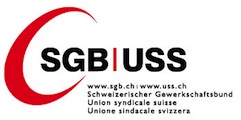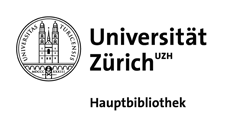Publications des institutions partenaires
An econometric analysis of India-Sri Lanka Free Trade Agreement
This paper investigates whether the India-Sri Lanka Free Trade Agreement (ISLFTA) has had trade creation or trade diversion effects on the rest of the World. The method used resembles the one used by Romalis (2005) to study NAFTA. In order to use the variations in tariff at the product level, we use six digit HS classification of products. We construct seven panel data sets for the...
Institution partenaire
Institut de hautes études internationales et du développement
Français, English / 08/08/2011
Migrant Networks as Substitute for Institutions: Evidence from Swiss Trade
This paper uses an untapped dataset on Swiss immigration and a novel instrumental variable to test three channels through which migrants promote trade. The main finding is that migrant networks are an effective substitute for formal institutions in facilitating trade. The effect takes place entirely on the extensive margin, suggesting migrant networks may be reducing fixed entry...
Institution partenaire
Institut de hautes études internationales et du développement
/ 08/08/2011
Limits of Floats: The Role of Foreign Currency Debt and Import Structure
that they insulate output better from real shocks, because the exchange rate can adjust and stabilize demand for domestic goods through expenditure switching. This argument is weakened in a model with high foreign currency debt and low exchange rate pass through to import prices. We analyze the transmission of real external shocks to the domestic economy under fixed and flexible...
Institution partenaire
Institut de hautes études internationales et du développement
/ 08/08/2011
Who Is Claiming For Fixed-Term Contracts?
The present study aims to contribute to the debate concerning the effects on economic performance and the structure of the labor market of regulations that combine high Employment Protection Legislations (EPL) with consent for the use of fixed-term contracts (FTC). Using a Rajan and Zingales (1998) difference-in-difference empirical technique in a panel of 45 countries, we explore...
Institution partenaire
Institut de hautes études internationales et du développement
/ 08/08/2011
Determinants of trade survival (The)
The aim of this paper is to explore the patterns of trade duration across regions and to identify its determinants. Using an extended Cox model, we evaluate the effects of country and product characteristics, as well as of trade cost variables on the duration of trade relationships from 96 countries from 1995 to 2004. Our results suggest first that the duration of trade relationships...
Institution partenaire
Institut de hautes études internationales et du développement
/ 08/08/2011
Effect of Equity Market Liberalization on the Transmission of Monetary Policy: Evidence from Australia (The)
This paper investigates the effects of equity market integration on the transmission of monetary policy shocks. Based on the assumption that financial market liberalization and integration lead to falling portfolio holding costs, we analyze its effect on a twocountry DSGE model with staggered prices and endogenous portfolio choice under incomplete markets. The model predicts that the...
Institution partenaire
Institut de hautes études internationales et du développement
/ 08/08/2011
Asymmetric Labor Market Institutions in the EMU: Positive and Normative Implications
How do asymmetric labor market institutions affect volatility of inflation and unemployment differentials in a currency union? What are the implications for monetary policy? To answer these questions, this paper sets up a DSGE currency union model with unemployment, hiring frictions and real wage rigidities. The model provides a rigorous but tractable framework for the analysis of...
Institution partenaire
Institut de hautes études internationales et du développement
/ 08/08/2011
Enfranchisement and budget deficits: a theoretical note
If women make different economic decisions than men on average, then an increase in women's influence in the political and economic spheres of society might change economic outcomes. In this note, we focus on the impact of female enfranchisement on fiscal policy outcomes. We present a simple median voter model and show that if women have different economic preferences than men,...
Institution partenaire
Institut de hautes études internationales et du développement
/ 08/08/2011
Market Driven Trade Liberalization and East Asian Regional Integration (The)
This paper creates a new index (“index of bilateral trade relation”) to quantitatively evaluate the degree of regional economic integration based on countries’ de facto bilateral trade relations. It concludes that a fundamental arrangement of East Asian regionalism should involve at least one of the two “hub” candidates – Japan and China. It also suggests that the China- ASEAN FTA (...
Institution partenaire
Institut de hautes études internationales et du développement
/ 08/08/2011
Current Account Adjustment and Financial Integration
The paper investigates whether higher financial integration leads in general to slower current account adjustments. The study estimates theoretically founded trade balance reaction functions for a panel of seventy countries from 1970-2004. The empirical analysis finds that adjustment in integrated economies is slower. Consistent with the presented theory the trade balance of...
Institution partenaire
Institut de hautes études internationales et du développement
/ 08/08/2011
Exporting strategies of heterogeneous firms subject to export shocks and financial restraints
This paper develops an open economy firm-heterogeneous model where the combination of market rigidities and exchange rate uncertainty acts like a barrier to trade and modifies a firm's optimal choice in terms of production and pricing. The existence of price and labour rigidities, coupled with imperfect financial development and exchange rate uncertainty, separates incumbent...
Institution partenaire
Institut de hautes études internationales et du développement
/ 08/08/2011
Firm heterogeneity, rules of origin and rules of cumulation
We analyse the impact of relaxing rules of origin (ROOs) in a simple setting with heterogeneous firms that buy intermediate inputs from domestic and foreign sources. In particular, we consider the impact of switching from bilateral to diagonal cumulation when using preferences (instead of paying the MFN tariff) involving the respect of rules of origin. We find that relaxing the...
Institution partenaire
Institut de hautes études internationales et du développement
Français, English / 08/08/2011
Firm Location Determinants: Empirical Evidence for France
This paper analyzes the effects of local externalities on the probability of starting a new economic activity. We use firm-level data and geographic information on French zip-codes for 1993-2002. Poisson and Negative Binomial panel data models are estimated as they naturally allow for large sets of location choices with frequent zero outcomes and control for unobserved zip-code...
Institution partenaire
Institut de hautes études internationales et du développement
/ 08/08/2011
Quality competition versus price competition goods: an empirical classification
Based on the recent trade models of the Heterogeneous Firms Trade (HFT) model and the Quality Heterogeneous Firms Trade (QHFT) model, we classify export goods (at the HS 6-digit level of disaggregation) by quality and price competition. We find a high proportions of quality-competition goods for the major EU countries and lower proportions for Canada, Australia and China. However,...
Institution partenaire
Institut de hautes études internationales et du développement
/ 08/08/2011
NAFTA and the diversification of Mexico’s exports : Emprical [sic] investigation on the predictions of the Heterogeneous Firms Trade models
Using NAFTA’s effect on Mexico’s exports as a natural experiment, this paper conducts an empirical analysis on the explanatory power of the two strands of heterogeneous firms trade models: the heterogeneous firms trade (HFT) model and the quality heterogeneous firms trade (QHFT) model. The paper first discusses the common prediction of the two models on ‘new’ goods’ exports and on...
Institution partenaire
Institut de hautes études internationales et du développement
/ 08/08/2011
Crowding-in, crowding-out and over-crowding: the interaction between price and quantity based instruments and intrinsic motivation
We conduct a field experiment involving real purchasing decisions in a large supermarket chain to test the effect of different regulatory interventions aiming to induce a more climate-friendly diet on intrinsic motivation. Focusing on shoppers who prefer the dirty variety, we compare labeling, a subsidy, a product ban and neutrally framed versions of the latter two in their ability...
Institution partenaire
Institut de hautes études internationales et du développement
/ 08/08/2011
Temporary migration policies and welfare of the host and source countries: a game-theoretic approach
Institution partenaire
Institut de hautes études internationales et du développement
/ 22/07/2011
What do we know about monetary policy that Friedman did not know?
Institution partenaire
Institut de hautes études internationales et du développement
/ 22/07/2011
Vulnerable groups in the conflict trap: results of a field trip to Haiti
Institution partenaire
Institut de hautes études internationales et du développement
/ 22/07/2011
The Doha Round: setting a deadline, defining a final deal : interim report - January 2011
Institution partenaire
Institut de hautes études internationales et du développement
Français, English / 22/07/2011
Pages
Le portail de l'information économique suisse
© 2016 Infonet Economy












